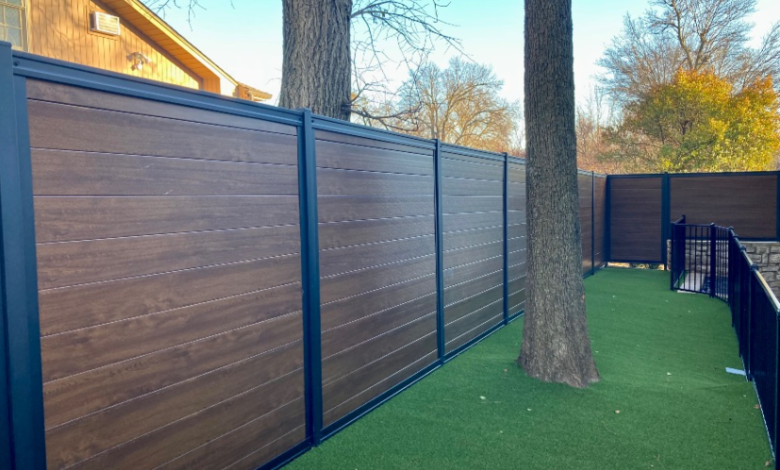Residential Fencing: Enhancing Security, Privacy, and Aesthetics

Residential fencing is more than just a boundary for your property—it’s an essential component of home improvement that provides security, privacy, and aesthetic appeal. Whether you’re a homeowner looking to protect your loved ones or someone aiming to boost curb appeal, a well-chosen fence can make a significant difference. This article explores the various aspects of residential fencing, from its benefits and types to materials and installation considerations.
Benefits of Residential Fencing
1. Improved Security
One of the primary reasons homeowners install fencing is for security. A fence serves as a deterrent to trespassers, burglars, and stray animals. It creates a physical barrier that makes unauthorized access more difficult. When paired with locks and gates, fencing can significantly improve a property’s overall safety.
See also: Walner Law Chicago : Personal Injury Experts in Illinois
2. Enhanced Privacy
A properly installed fence gives homeowners peace of mind by offering privacy from neighbors and passersby. This is especially important for families who spend a lot of time outdoors, whether relaxing in the garden, hosting gatherings, or playing with children.
3. Defined Property Boundaries
Fencing clearly marks the limits of your property, preventing disputes with neighbors and encroachments. It establishes a visual and legal boundary that’s essential for property ownership and management.
4. Increased Property Value
A well-maintained, aesthetically pleasing fence can increase the resale value of a home. It adds to the property’s visual appeal and gives potential buyers an added sense of security and privacy.
Types of Residential Fencing
There are several types of residential fencing available, each with its unique advantages and ideal applications.
1. Wooden Fences
Wood is a classic fencing material known for its natural beauty and versatility. It can be customized in terms of height, style, and color. Common styles include picket fences, privacy fences, and split rail fences. However, wooden fences require regular maintenance to protect against weather and pests.
2. Vinyl Fences
Vinyl fencing is a popular low-maintenance option. It’s resistant to rot, insects, and harsh weather conditions. Available in various styles and colors, vinyl fences are a durable and long-lasting choice for homeowners seeking both function and style.
3. Chain-Link Fences
Chain-link fences are among the most affordable fencing options. While they offer less privacy, they are durable, easy to install, and effective for security. Adding slats or plants can improve their appearance and privacy level.
4. Metal Fences (Aluminum, Wrought Iron, Steel)
Metal fences are highly durable and can provide a sophisticated look. Wrought iron fences, for example, are known for their ornamental designs, while aluminum offers a rust-resistant, low-maintenance alternative. These are ideal for front yards or areas where aesthetics are a priority.
5. Composite Fences
Composite fences are made from a blend of wood fibers and plastic. They offer the appearance of wood with improved durability and low maintenance. Composite fencing is also eco-friendly, making it a great option for environmentally conscious homeowners.
Choosing the Right Fence
When selecting the right type of residential fence, several factors should be considered:
1. Purpose
Clarify the main reason for the fence—is it for privacy, security, aesthetic appeal, or all three? This will influence the height, material, and design.
2. Local Regulations
Many cities and communities have regulations regarding fence height, materials, and placement. Always check local codes and homeowner association rules before installation.
3. Budget
The cost of fencing varies depending on material, size, and complexity. While chain-link and wood tend to be more affordable, materials like vinyl or wrought iron may require a higher upfront investment but lower maintenance costs over time.
4. Maintenance Requirements
Consider how much time and effort you’re willing to put into maintaining the fence. For example, wood may require painting or staining, while vinyl and metal options need less upkeep.
Installation and Maintenance
DIY vs. Professional Installation
While some homeowners opt for DIY fence installation to save money, hiring professionals can ensure the job is done efficiently and according to local regulations. Professionals can also advise on the best materials and designs for your property.
Routine Maintenance
To ensure longevity, routine maintenance is essential. This includes cleaning, inspecting for damage, treating wood against rot or insects, and repainting or resealing when needed. Even low-maintenance fences benefit from occasional inspections and cleaning.
Last Thoughts
Residential fencing plays a crucial role in securing your home, enhancing privacy, and boosting property value. With a wide range of materials and designs available, homeowners can choose a solution that meets their specific needs and style preferences. Whether you opt for the timeless appeal of wood, the low maintenance of vinyl, or the strength of metal, a well-planned fence is a smart investment in your home’s safety and appearance.





